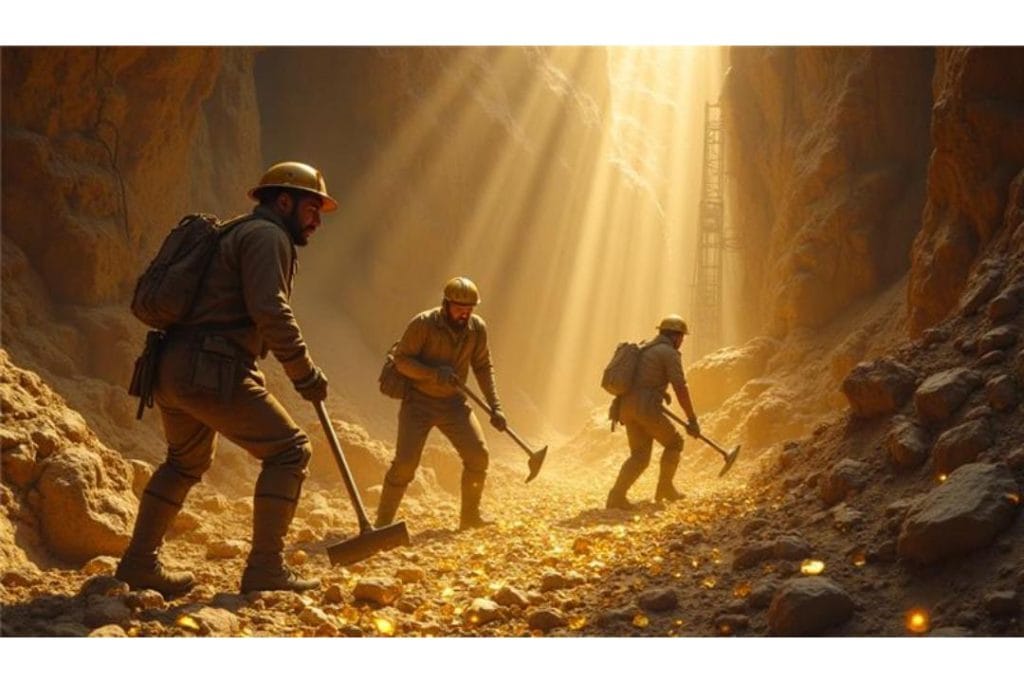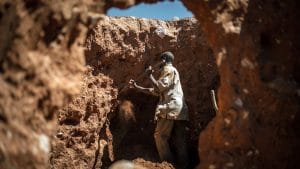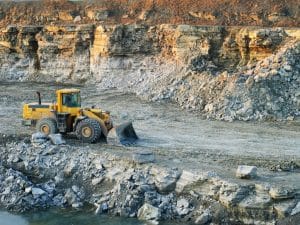Gold and other natural resources are obtained via mining, a major industry. But what follows the gold’s extraction? Sometimes, extraction produces tailings or mining waste. These are unutilized rocks and materials that lack sufficient precious metals, including gold, to be employed.
Many people raise questions such as: Does gold still exist in this waste? Is it possible to find gold in mining damage? Let’s examine it in the following article.
What is Mining Damage?
The residual stuff after mining companies get valuable minerals like gold, copper, or coal from the earth is known as mining waste. Not all of the material from the mining process contains valuable minerals. The remainder is thrown away because it is not cost-effective to process further.
Mining waste can be enormous in certain situations, enveloping vast areas. It is frequently held in ponds or piles known as tailings dams. These waste products might sometimes release dangerous chemicals into the environment as they are impacted over time by weather, water, and natural processes.
Is Gold Still Found in Mining Waste?
Many wonders if, after the first mining, any gold could still be left in the waste materials. The answer is yes, sometimes.
Small quantities of gold or other precious minerals can occasionally stay in the garbage. This is so either the original mining procedure was not flawless, or the gold was distributed unevenly. Searching for and getting these small quantities of gold from waste materials is made possible by modern technology and improved methods.
Actually, in recent years, researchers and businesses have been investigating methods to “re-mine” ancient waste piles to extract the gold that remains. This helps lower environmental issues produced by leftover trash, as well as being advantageous for companies.
Is Gold extraction from mining waste valuable?
Although it is strictly feasible to extract gold from mining trash, several criteria determine if doing so would be sensible:
Amount of gold present: The gold in waste is often in very minute amounts, termed low-grade.
Cost of gold: The cost of gold extraction can be high, particularly from trash with minute amounts of gold.
Environmental effect: Sometimes, extracting gold from garbage might help to lower pollution by removing past waste heaps.
Companies could choose to do it if the amount of gold is sufficient to pay the bills and make a profit. Otherwise, it could be financially unworkable.
Methods For Extracting Gold from Mining Waste
Let us next consider a few methods companies and researchers use to recover gold from mining waste.
1. Cyanide Leach
Gold mining employs one of the most commonly used methods. Cyanide-containing solution is mixed with the waste material to melt the gold. The gold can next be isolated from the solution and cleaned. This method is appropriate for low-grade ore and trash, including very minute gold particles.
Cyanide is a poisonous compound; thus, this technique must be precisely managed to avoid environmental damage.
2. Gravitational Separation
This technique separates heavier particles like gold from lighter rocks and dirt by processing the waste material. Techniques include panning, sluicing, or using specialized equipment like centrifuges. When gravity can separate gold particles big enough, this approach is beneficial.
3. Flotation
The gold-rich foam is gathered next. Frequently used in mineral processing and adaptable for garbage materials, flotation can be used.
4. Chemical Extraction
Gold can sometimes be retrieved from waste using additional chemicals like mercury or particular reagents. These techniques, though, can be dangerous and are less often used now because of environmental issues.
5. Bio-Extraction
Scientists are also investigating the use of minute living organisms known as microbes to aid in the dissolution or decomposition of waste materials and free gold. This growing field, known as bio-mining, is regarded as environmentally beneficial.
Wholesale raw gold supplier in DRC offers quality gold for bulk businesses to source on sale.
Challenges Faced in Extracting Gold from Waste
Though there are techniques to reclaim gold from mining trash, the process is not always straightforward or simple. Some of the major difficulties are as follows:
1. Very Low Gold Concentration
Most mining trash has only minute gold deposits; therefore, extracting is expensive and challenging. Often, a major difficulty is locating sufficient gold to make the procedure financially viable.
2. Environmental Issues
If not properly controlled, methods like cyanide leaching and mercury utilization might damage the surroundings. Water contamination and health risks for nearby people are always present.
3. Tech. Difficulties
Processing old waste piles or tailings is difficult since the material might be volatile, include toxic chemicals, or have irregular gold distribution. Furthermore, difficult extraction might result from weathering or chemical alteration over time of the trash.
4. Economic Feasibility
Although gold can be recovered, transportation, processing, and environmental protection may be expensive. Should the procedure cost more than the gold value, it might not be worth undertaking.
Would Recycled Mining Trash Improve the Environment?
Yes! One excellent strategy to lower environmental contamination is extracting gold from discarded mining debris. Old garbage dumps may sometimes leach poisonous substances into the water and the ground.
Recovering the remaining gold would help to clear these areas and cut down on pollution. Companies profit from leftover gold, and the environment gains less trash and contamination, a win-win scenario.
Future Gold Extraction from Mining Residues
Better, safer, and less expensive techniques for extracting gold from trash are under intense investigation by scientists and businesses. Promising technologies include enhanced chemical processes, bio-mining using bacteria, and others.
More old mining waste could be reprocessed in the future to extract gold and other important minerals. This also makes mining more environmentally friendly and supports sustainable mining in addition to lowering waste.
Final Ideas
Damaged mining waste does generate gold, although mostly in modest amounts. Although it can be complex, costly, and occasionally not lucrative, several methods exist to extract gold from mining waste.
The prospect of extracting gold from antiquated garbage dumps gets more real as technology evolves, nevertheless. Cleaning up abandoned mining areas can also be a means of assisting in the preservation of the environment.
Mining waste can still contain priceless treasures if we know how to locate and remove them; it is not only useless leftovers. Better technology and ongoing research might make the idea of transforming old waste into riches more prevalent, therefore benefiting both miners and the environment.
Bunia Metals Group offers bulk wholesale raw gold online for your business to purchase affordable Raw Gold.




